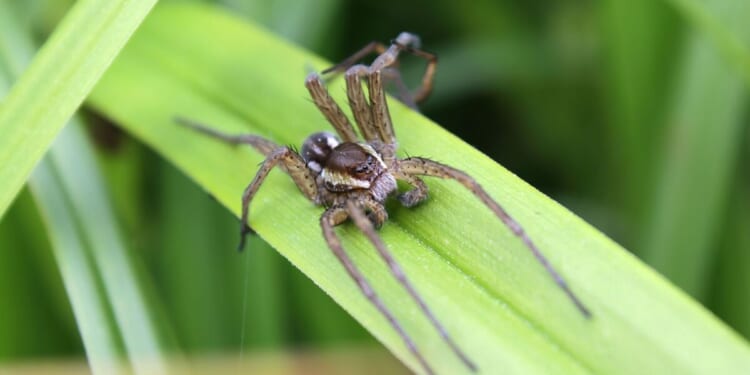Huge spiders have come back from the brink of extinction and are now being found in homes across the UK. Experts said the species, which almost became extinct in 2010, is one of the “rarest invertebrates” in the nation but has now made a comeback.
There are now believed to be up to 10,000 breeding female Fen Raft Spiders across the UK, including 3,750 at 12 sites across Norfolk. The Royal Society for the Protection of Birds (RSPB) has worked to save the species in recent years with a conservation breeding resuce programme. According to Chester Zoo, the team reared hundreds of baby spiders in individual test tubes and hand fed them tiny flies.
They added: “Eventually, the young spiders grew strong enough to be returned to their natural habitat, which our partners worked to restore, and we released them in their hundreds! Now, almost a decade and a half later, our friends at the @Natures_Voice estimate there are 10,000 breeding females across the UK, and they’re having their best year on record.”
As reported by Yahoo! News, the Fen Raft Spider lives off other spiders, damselflies, dragonfly larvae and even fish and tadpoles. They are often spotted in grazing marsh ditches between June and September.
Tim Strudwick, from the RSPB Mid Yare nature reserve, told the MailOnline: “The Fen Raft Spider is one of the UK’s rarest invertebrates and we are proud of the role our reserves and teams have played in its recovery.
“These spiders have an important role in maintaining the rich aquatic diversity found in the grazing ditches on our reserves. The females are impressive in size, but also beautiful – they are truly special to see.”
Fen Raft Spiders are known for their chocolate-brown colour and distinctive cream-white stripes. They spin large tent-like “nursery webs” to protect their young.
They are one of the UK’s largest spiders with their leg span reaching up to 7cm. They can also walk or run across water to catch prey.
Jane Sears, an RSPB ecologist, added: “The RSPB has played an important role in the reintroduction of these spiders and means we must continue to restore, manage and protect the wetland habitats where the Fen Raft Spider thrives to ensure the future of not just this species, but many others too.”

















